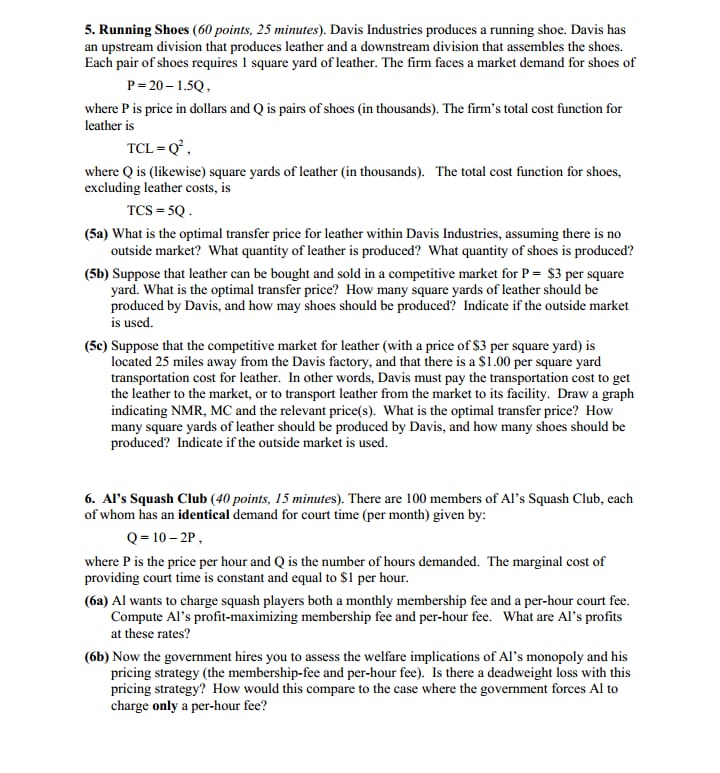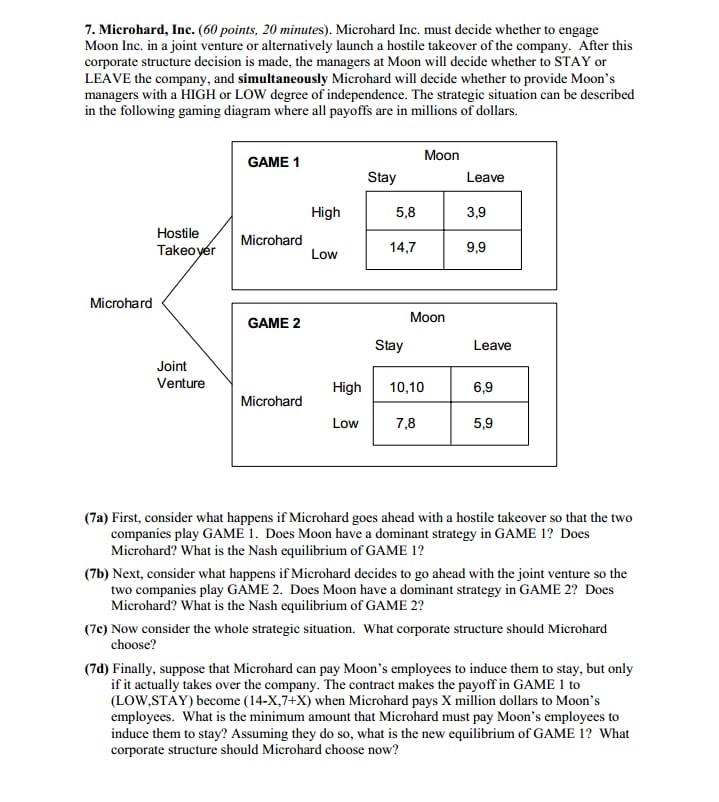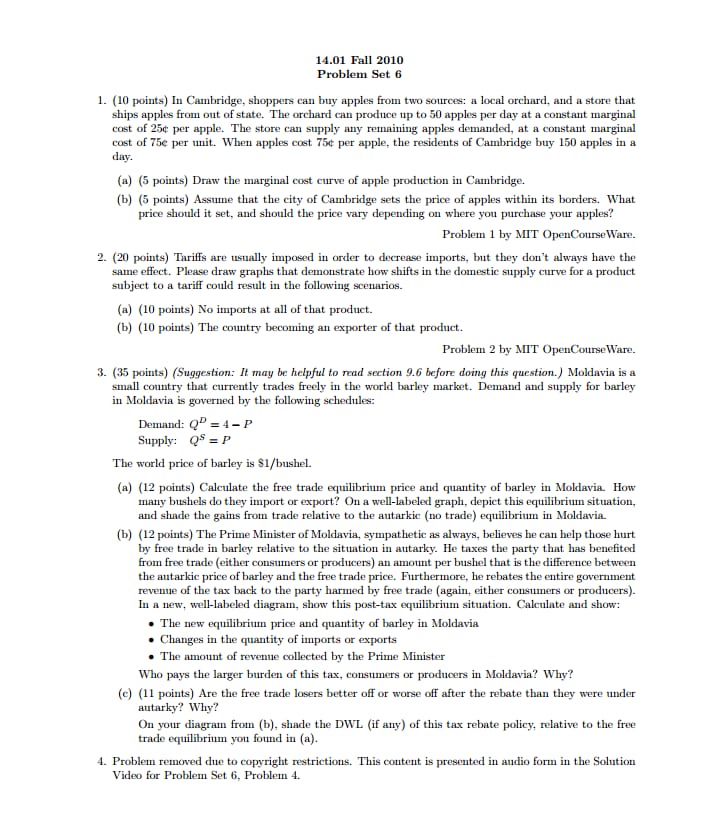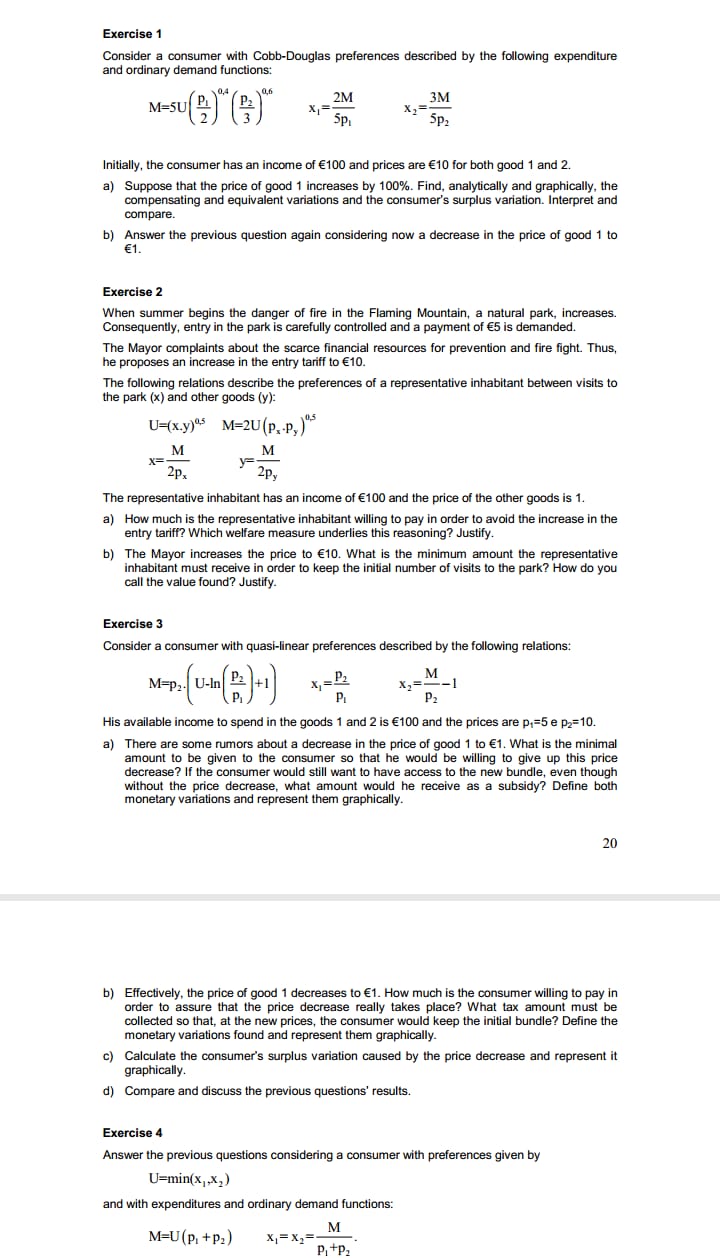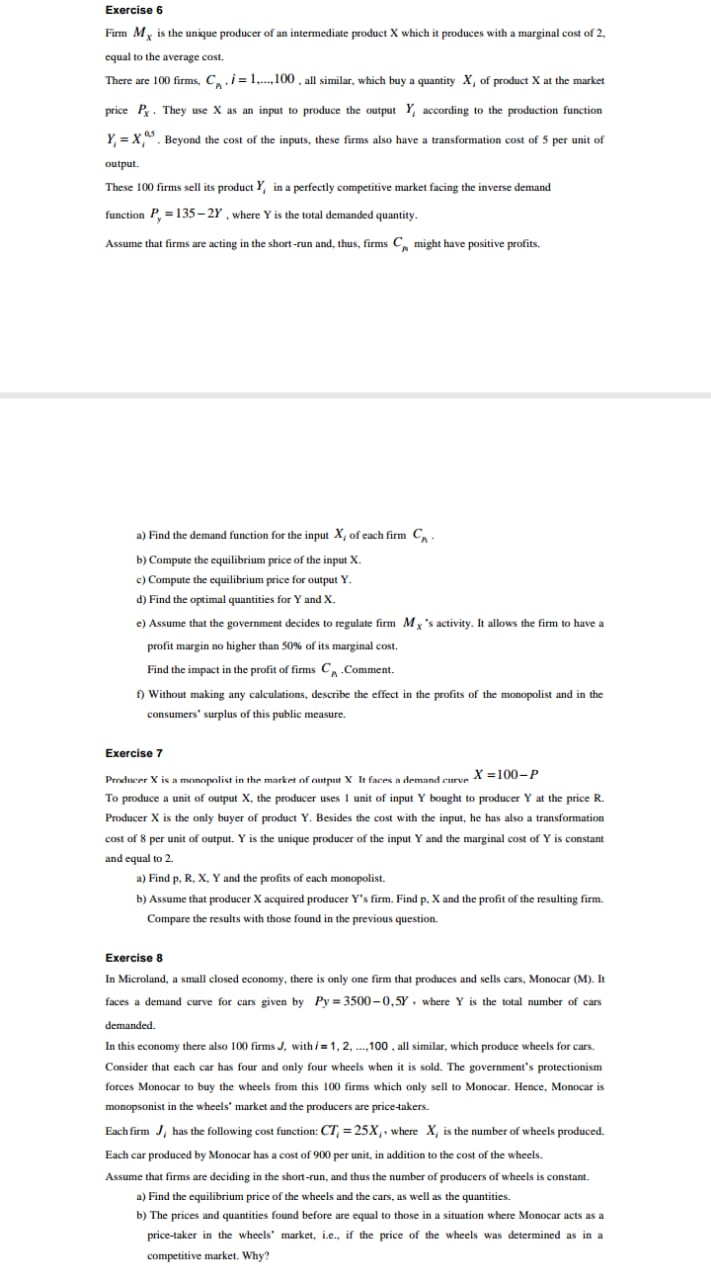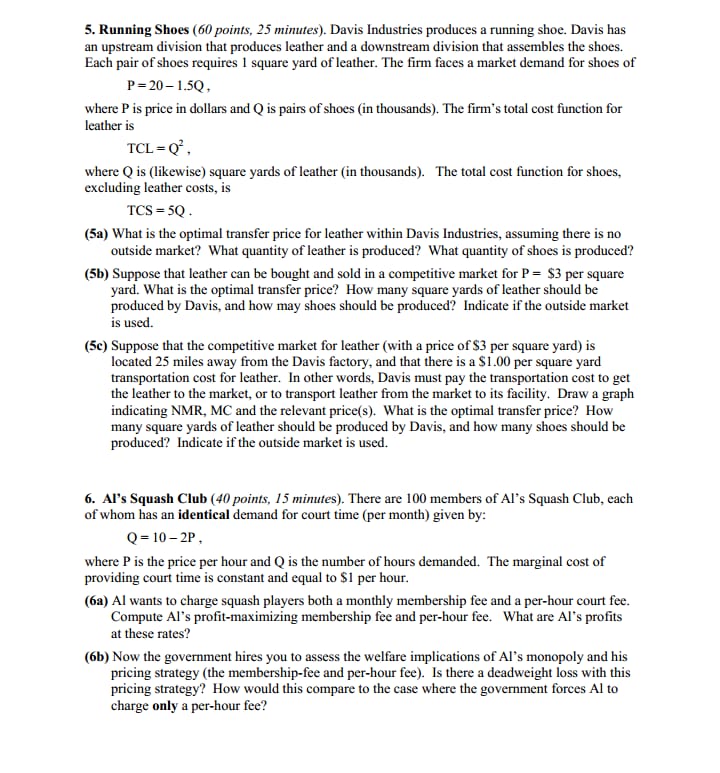

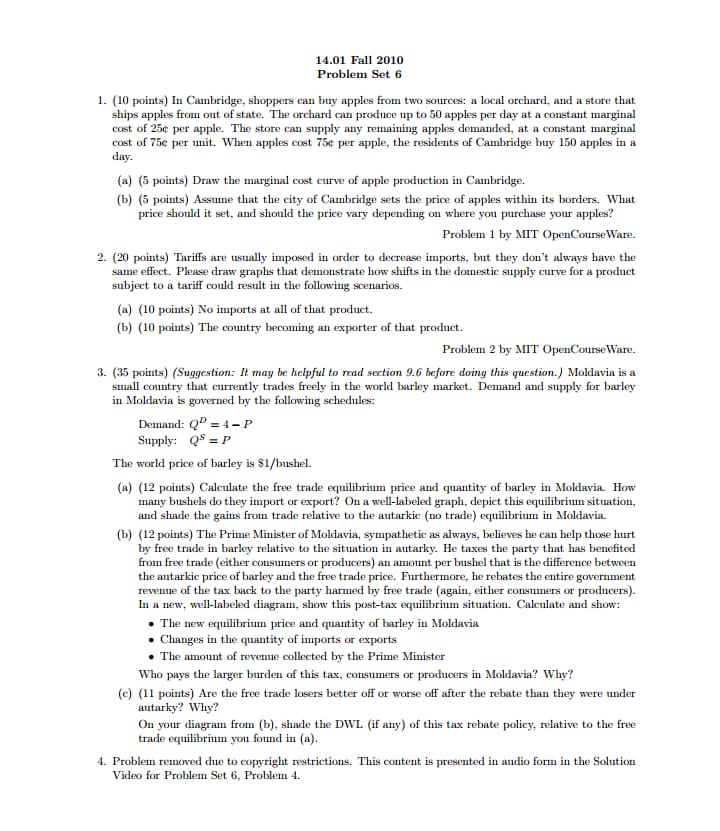
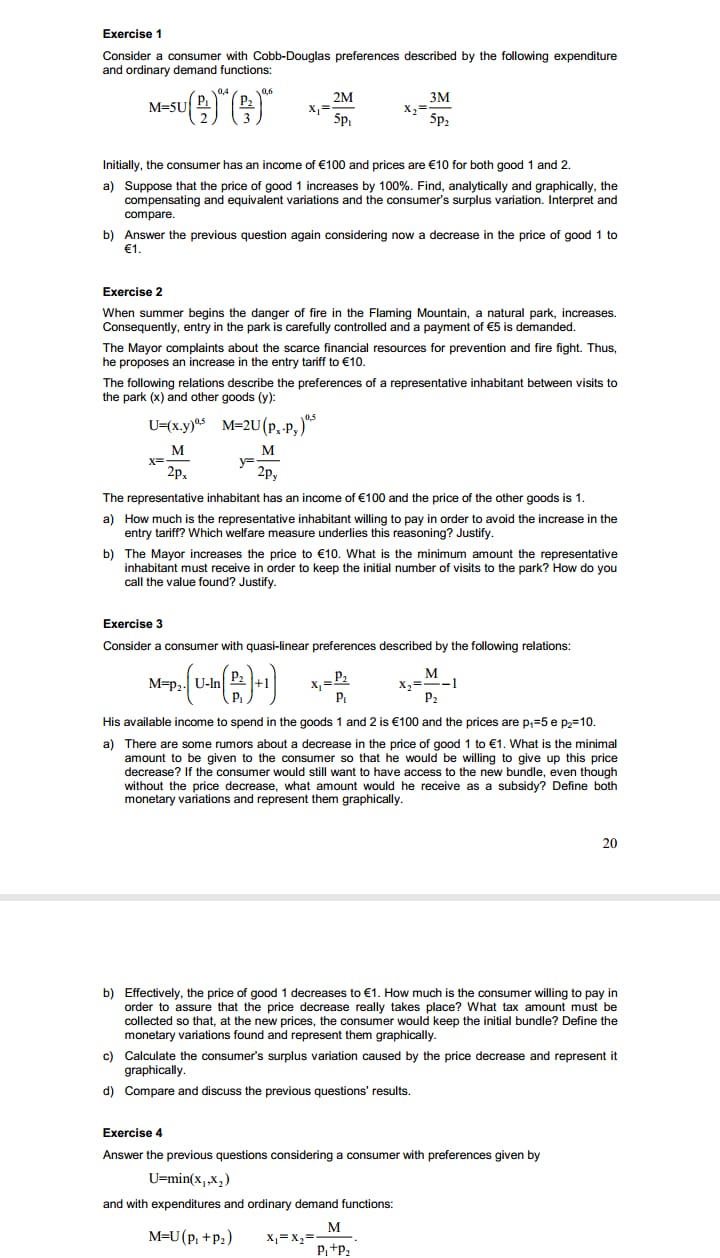
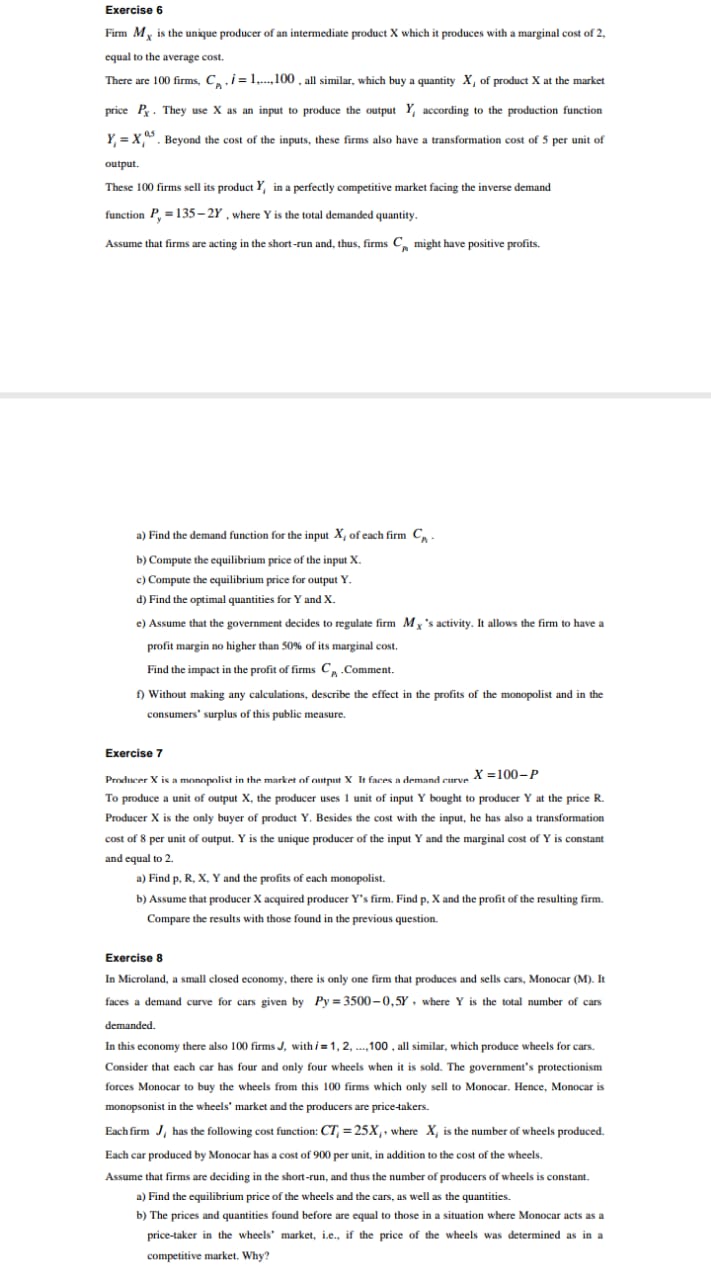
alll needed information is given
5. Running Shoes (60 points, 25 minutes). Davis Industries produces a running shoe. Davis has an upstream division that produces leather and a downstream division that assembles the shoes. Each pair of shoes requires 1 square yard of leather. The firm faces a market demand for shoes of P=20-1.5Q. where P is price in dollars and Q is pairs of shoes (in thousands). The firm's total cost function for leather is TCL = Q' , where Q is (likewise) square yards of leather (in thousands). The total cost function for shoes, excluding leather costs, is TCS = 5Q . (5a) What is the optimal transfer price for leather within Davis Industries, assuming there is no outside market? What quantity of leather is produced? What quantity of shoes is produced? (5b) Suppose that leather can be bought and sold in a competitive market for P = $3 per square yard. What is the optimal transfer price? How many square yards of leather should be produced by Davis, and how may shoes should be produced? Indicate if the outside market is used. (5c) Suppose that the competitive market for leather (with a price of $3 per square yard) is located 25 miles away from the Davis factory, and that there is a $1.00 per square yard transportation cost for leather. In other words, Davis must pay the transportation cost to get the leather to the market, or to transport leather from the market to its facility. Draw a graph indicating NMR, MC and the relevant price(s). What is the optimal transfer price? How many square yards of leather should be produced by Davis, and how many shoes should be produced? Indicate if the outside market is used. 6. Al's Squash Club (40 points, 15 minutes). There are 100 members of Al's Squash Club, each of whom has an identical demand for court time (per month) given by: Q =10-2P where P is the price per hour and Q is the number of hours demanded. The marginal cost of providing court time is constant and equal to $1 per hour. (6a) Al wants to charge squash players both a monthly membership fee and a per-hour court fee. Compute Al's profit-maximizing membership fee and per-hour fee. What are Al's profits at these rates? (6b) Now the government hires you to assess the welfare implications of Al's monopoly and his pricing strategy (the membership-fee and per-hour fee). Is there a deadweight loss with this pricing strategy? How would this compare to the case where the government forces Al to charge only a per-hour fee?7. Microhard, Inc. (60 points, 20 minutes). Microhard Inc. must decide whether to engage Moon Inc. in a joint venture or alternatively launch a hostile takeover of the company. After this corporate structure decision is made, the managers at Moon will decide whether to STAY or LEAVE the company, and simultaneously Microhard will decide whether to provide Moon's managers with a HIGH or LOW degree of independence. The strategic situation can be described in the following gaming diagram where all payoffs are in millions of dollars. GAME 1 Moon Stay Leave High 5.8 3.9 Hostile Microhard Takeover Low 14,7 9.9 Microhard GAME 2 Moon Stay Leave Joint Venture High 10,10 6,9 Microhard Low 7,8 5,9 (7a) First, consider what happens if Microhard goes ahead with a hostile takeover so that the two companies play GAME 1. Does Moon have a dominant strategy in GAME 1? Does Microhard? What is the Nash equilibrium of GAME 1? (7b) Next, consider what happens if Microhard decides to go ahead with the joint venture so the two companies play GAME 2. Does Moon have a dominant strategy in GAME 2? Does Microhard? What is the Nash equilibrium of GAME 2? (7c) Now consider the whole strategic situation. What corporate structure should Microhard choose? (7d) Finally, suppose that Microhard can pay Moon's employees to induce them to stay, but only if it actually takes over the company. The contract makes the payoff in GAME 1 to (LOW,STAY) become (14-X,7+X) when Microhard pays X million dollars to Moon's employees. What is the minimum amount that Microhard must pay Moon's employees to induce them to stay? Assuming they do so, what is the new equilibrium of GAME 1? What corporate structure should Microhard choose now?14.01 Fall 2010 Problem Set 6 1. (10 points) In Cambridge, shoppers can buy apples from two sources: a local orchard, and a store that ships apples from out of state. The orchard can produce up to 50 apples per day at a constant marginal cost of 25c per apple. The store can supply any remaining apples demanded, at a constant marginal cost of 75e per unit. When apples cost 75c per apple, the residents of Cambridge buy 150 apples in a day. (a) (5 points) Draw the marginal cost curve of apple production in Cambridge. (b) (5 points) Assume that the city of Cambridge sets the price of apples within its borders. What price should it set, and should the price vary depending on where you purchase your apples? Problem 1 by MIT OpenCourse Ware. 2. (20 points) Tariffs are usually imposed in order to decrease imports, but they don't always have the same effect. Please draw graphs that demonstrate how shifts in the domestic supply curve for a product subject to a tariff could result in the following scenarios. (a) (10 points) No imports at all of that product. (b) (10 points) The country becoming an exporter of that product. Problem 2 by MIT OpenCourse Ware. 3. (35 points) (Suggestion: It may be helpful to read section 9.6 before doing this question.) Moldavia is a small country that currently trades freely in the world barley market. Demand and supply for barley in Moldavia is governed by the following schedules: Demand: Q" =4- P Supply: Q5 = P The world price of barley is $1/bushel. (a) (12 points) Calculate the free trade equilibrium price and quantity of barley in Moldavia. How many bushels do they import or export? On a well-labeled graph, depict this equilibrium situation, and shade the gains from trade relative to the autarkic (no trade) equilibrium in Moldavia (b) (12 points) The Prime Minister of Moldavia, sympathetic as always, believes he can help those hurt by free trade in barley relative to the situation in autarky. He taxes the party that has benefited from free trade (either consumers or producers) an amount per bushel that is the difference between the autarkic price of barley and the free trade price. Furthermore, he rebates the entire government revenue of the tax back to the party harmed by free trade (again, either consumers or producers). In a new, well-labeled diagram, show this post-tax equilibrium situation. Calculate and show: . The new equilibrium price and quantity of barley in Moldavia . Changes in the quantity of imports or exports . The amount of revenue collected by the Prime Minister Who pays the larger burden of this tax, consumers or producers in Moldavia? Why? (e) (11 points) Are the free trade losers better off or worse off after the rebate than they were under autarky? Why? On your diagram from (b), shade the DWL (if any) of this tax rebate policy, relative to the free trade equilibrium you found in (a). 4. Problem removed due to copyright restrictions. This content is presented in audio form in the Solution Video for Problem Set 6, Problem 4.Exercise 1 Consider a consumer with Cobb-Douglas preferences described by the following expenditure and ordinary demand functions: M-SUCH () 2M 3M X 2= 5p2 Initially, the consumer has an income of E100 and prices are E10 for both good 1 and 2. a) Suppose that the price of good 1 increases by 100%. Find, analytically and graphically, the compensating and equivalent variations and the consumer's surplus variation. Interpret and compare. b) Answer the previous question again considering now a decrease in the price of good 1 to E1. Exercise 2 When summer begins the danger of fire in the Flaming Mountain, a natural park, increases. Consequently, entry in the park is carefully controlled and a payment of E5 is demanded The Mayor complaints about the scarce financial resources for prevention and fire fight. Thus, he proposes an increase in the entry tariff to E10. The following relations describe the preferences of a representative inhabitant between visits to the park (x) and other goods (y): U=(x.y)"'s M=2U(P.-P,)" M M X= 2Px 2py The representative inhabitant has an income of E100 and the price of the other goods is 1. a) How much is the representative inhabitant willing to pay in order to avoid the increase in the entry tariff? Which welfare measure underlies this reasoning? Justify. b) The Mayor increases the price to E10. What is the minimum amount the representative inhabitant must receive in order to keep the initial number of visits to the park? How do you call the value found? Justify. Exercise 3 Consider a consumer with quasi-linear preferences described by the following relations: M=Pz. U-In P2 +1 x, =P2 M PI P2 His available income to spend in the goods 1 and 2 is (100 and the prices are p,=5 e p2=10. a) There are some rumors about a decrease in the price of good 1 to E1. What is the minimal amount to be given to the consumer so that he would be willing to give up this price decrease? If the consumer would still want to have access to the new bundle, even though without the price decrease, what amount would he receive as a subsidy? Define both monetary variations and represent them graphically. 20 b) Effectively, the price of good 1 decreases to E1. How much is the consumer willing to pay in order to assure that the price decrease really takes place? What tax amount must be collected so that, at the new prices, the consumer would keep the initial bundle? Define the monetary variations found and represent them graphically. c) Calculate the consumer's surplus variation caused by the price decrease and represent it graphically. d) Compare and discuss the previous questions' results. Exercise 4 Answer the previous questions considering a consumer with preferences given by U=min(X,,X2) and with expenditures and ordinary demand functions: M=U(P, + P2 ) M X=X1= P +P 2Exercise 6 Firm My is the unique producer of an intermediate product X which it produces with a marginal cost of 2, equal to the average cost. There are 100 firms, C. . /= 1.....100 . all similar, which buy a quantity X, of product X at the market price Pr . They use X as an input to produce the output , according to the production function Y, = X,". Beyond the cost of the inputs, these firms also have a transformation cost of 5 per unit of output. These 100 firms sell its product ), in a perfectly competitive market facing the inverse demand function P, = 135-2Y , where Y is the total demanded quantity. Assume that firms are acting in the short-run and, thus, firms C, might have positive profits. a) Find the demand function for the input X, of each firm Co . b) Compute the equilibrium price of the input X. c) Compute the equilibrium price for output Y. d) Find the optimal quantities for Y and X. e) Assume that the government decides to regulate firm My 's activity. It allows the firm to have a profit margin no higher than 50% of its marginal cost. Find the impact in the profit of firms Co . Comment. () Without making any calculations, describe the effect in the profits of the monopolist and in the consumers' surplus of this public measure. Exercise 7 Producer X is a monopolist in the market of output X It faces a demand curve X =100-P To produce a unit of output X. the producer uses I unit of input Y bought to producer Y at the price R. Producer X is the only buyer of product Y. Besides the cost with the input, he has also a transformation cost of 8 per unit of output. Y is the unique producer of the input Y and the marginal cost of Y is constant and equal to 2. a) Find p. R. X. Y and the profits of each monopolist. b) Assume that producer X acquired producer Y's firm. Find p. X and the profit of the resulting firm. Compare the results with those found in the previous question. Exercise 8 In Microland, a small closed economy, there is only one firm that produces and sells cars, Monocar (M). It faces a demand curve for cars given by Py = 3500-0.5Y . where Y is the total number of cars demanded. In this economy there also 100 firms J, with / = 1, 2, ...,100 , all similar, which produce wheels for cars. Consider that each car has four and only four wheels when it is sold. The government's protectionism forces Monocar to buy the wheels from this 100 firms which only sell to Monocar. Hence, Monocar is monopsonist in the wheels' market and the producers are price-takers. Each firm J, has the following cost function: C7, = 25X, . where X, is the number of wheels produced. Each car produced by Monocar has a cost of 900 per unit, in addition to the cost of the wheels. Assume that firms are deciding in the short-run, and thus the number of producers of wheels is constant. a) Find the equilibrium price of the wheels and the cars, as well as the quantities. b) The prices and quantities found before are equal to those in a situation where Monocar acts as a price-taker in the wheels' market, i.e., if the price of the wheels was determined as in a competitive market. Why





